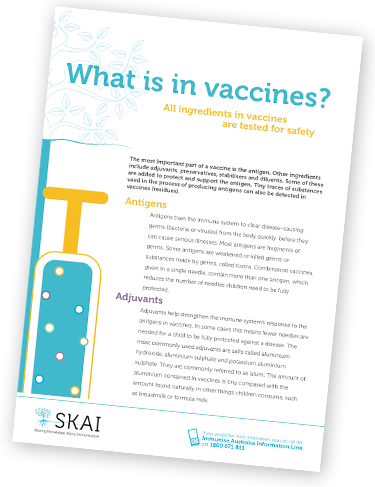What is in the vaccines?
Key facts
-
All ingredients in vaccines are tested for safety.
-
The most important part of a vaccine is the antigen. The antigen trains the immune system to clear disease-causing bacteria or viruses from the body quickly, before they can cause serious illness.
-
Other ingredients, including adjuvants, preservatives, stabilisers, and diluents, are there to protect and support the antigen.
